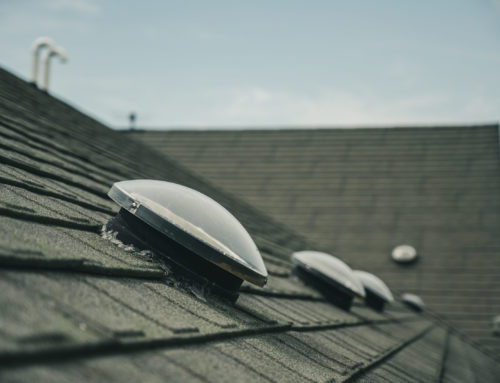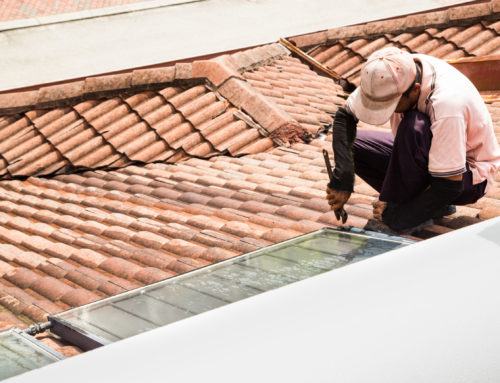Advantages And Disadvantages Of Types Of Solar Panels
The advantages of solar panels are pretty well-known today. But, are we as familiar with the benefits of the different types of solar panels?
You don’t have to be a power or energy expert to know that switching to solar cells will instantly improve the efficiency of your home. Our sun is the most powerful source of energy in our solar system.
Within 24 hours, our sun can generate more energy than we would consume over 27 years. It’s no wonder that solar photovoltaic (PV) energy use is increasing.
However, just as there are different kinds of battery power, there are various ways of capturing and using solar energy. Not just any silicon structure will be able to capture the most energy from the sun. You’ll need something special if you want to unlock the true potential of solar cells.
Today, we’re going to discuss what solar panel type can deliver the best solar efficiency.
Which Kind Of Solar Panel Is Best For My Home?
If you’re interested in using a solar PV panel system to power your home, part of your decision will involve choosing the right solar cells. Thin-film solar panels are different from monocrystalline silicon solar panels and polycrystalline silicon panels.
Today, we’re going to cover how the different kinds of silicon in your solar cells can help your roof to capture more solar energy in a shorter time. Some sorts of solar cells even work better with things like battery bank products so that you can store and use power for later.
The most common way to differentiate between solar power options for your home and the different kinds of solar silicon panels available is to look at the appearance of the panels and how the panels convert sunlight into energy.
What Are The Different Types Of Solar Panels?
Monocrystalline Silicon Solar Cells
One of the first and best-known types of solar panels available on the market today is monocrystalline silicon cells. Both homes and businesses use photovoltaic silicon panels most often.
You can easily recognize a monocrystalline solar panel because of its uniform dark color and round edges. The high purity of the crystalline silicon in these solar cells helps the monocrystalline cell have one of the highest efficiency rates. Some of the new solar power options can capture up to 20% of the sun’s output.
These kinds of solar PV cells also have a higher electricity output than other types of solar tiles. The high purity of the silicon allows for better responses to high temperatures and more power in a limited amount of time. These solar cells can take up less space than other solar panels as well.
Pros:
- High-quality silicon.
- High-performance rates of 20%.
- Make good use of roof space.
- It can collect more solar power for a battery bank.
- Warranties often last longer (up to 25 years).
- A higher yield of solar energy per square foot.
Cons:
- They can cost more.
- Circuit breakdown can occasionally occur when the PV panels are shaded.
- Monocrystalline cells produce waste during manufacturing.
- Monocrystalline panels perform best in warm weather.
- High temperatures can cause damage to your monocrystalline solar module over time.
Polycrystalline Silicon Solar Cells
If you’re looking for the best solar cells that money can buy for your roof, you may have heard of the polycrystalline solar panel. Polycrystalline silicon has a speckled look, which looks very different from a monocrystalline panel. The mottled look results from molten silicon, which is cheaper than making a monocrystalline silicon panel.
Most people who want renewable energy go with monocrystalline and polycrystalline PV cells. Adding polycrystalline solar panels to your PV module will allow you to build your solar technology quicker and with less of an investment. However, while the solar installation will take less time and money, you’ll also have a lower efficiency of only around 15%. There’s also less space efficiency with multicrystalline panels, not to mention a shorter lifespan.
Compared to other kinds of solar technology, these PV cells suffer from diminished power output and more damage when exposed to high temperatures.
Pros:
- Multicrystalline silicon is less expensive.
- Quicker and easier installation of the photovoltaic panel.
- Photovoltaic cells are easy to find.
- The manufacturing process requires very few fossil fuels.
- It works reasonably well compared to other crystalline solar panels.
- They can be used with batteries and inverter technology.
Cons:
- Generate less solar power.
- Take up more space on your roof.
- They may not last as long.
- Damages easily when exposed to high temperatures.
Thin-Film Solar Panels
Another option to consider when looking into types of solar panels are thin-film panels. Thin-film solar panels are a kind of second-generation solar cell. These photovoltaic cells are made with silicon, just like monocrystalline solar cell and polycrystalline solar cell options.
Thin-film solar panels are often less expensive than monocrystalline silicon. They’re also excellent when it comes to the ease with which they can be manufactured. The fact that you can make a PV cell so easily makes it suitable for a solar array when you don’t want to worry about using lots of fossil fuels in production.
A thin-film PV panel is also very flexible. This opens up opportunities for alternative applications. Thin-film solar cells can be placed in locations besides on a business or home roof. They’re less affected by high temperatures and very durable. However, they also come with a limited warranty, restricted power output, and take up more space.
Pros:
- Very lightweight and flexible silicon cells.
- Immune to problems with temperatures.
- They can be used in places other than on a roof.
- Easy to produce.
- Work in low light conditions.
- Don’t require as many fossil fuels to make.
- Affordable alternative to monocrystalline.
Cons:
- Limited efficiency, often 7-13%.
- Very little power output.
- Take up a lot of space (not ideal for residential use).
- It can cost a lot when you add up the cost of multiple silicon solar panels.
- Short life span and warranty.
Amorphous Silicon Solar Cells And Other Solar Power Options
Finally, one of the kinds of solar cells often overlooked when considering solar energy options is the amorphous silicon cell. An amorphous solar panel option includes the solar cells that you might have seen on pocket calculators. Amorphous silicon is a kind of thin-film solar panel. Using triple-layered technology, the silicon strengthens and improves the performance of thin-film solar panels.
Amorphous solar panels are still relatively new. Because of this, we’re still discovering how much energy or power these tools can produce. However, they’re often used to create things like biohybrid solar cell panels. The idea behind the biohybrid cell is to take advantage of thin-film panels and simulate photosynthesis.
The research that we are doing into photovoltaic technology is growing more advanced by the day. As more companies look for ways to transform solar power and improve how we collect energy from the sun, opportunities are appearing everywhere. The crystalline solar panels, batteries, and charge controller technology we see in the future may differ from what we use today.
Experts are also looking to create different solar panels with thin-film technology, like cadmium telluride solar cells. These cells have a low cost and a shorter payback time for commercial and residential customers. The aim of creating energy or power with this kind of solar cell is to keep the carbon footprint of people using renewable energy as low as possible.
Photovoltaic research is even taking place in creating a solar PV system made out of concentrated cells. These multi-junction solar cells have an efficiency rating of up to 41%. However, they also use many advanced materials and technology, including lenses, cooling systems, and curved mirror surfaces. This also means that while concentrated solar PV might offer more efficiency, they’re often more expensive too.
Is Solar Efficiency Getting Better?
Looking at the different types of solar cells on the market highlights how much work we have to do in producing new renewable sources of electricity. With many of the most common photovoltaic technology options hovering at an efficiency of around 20%, we’ve got a way to go.
The good news is that the solar cell is improving and evolving all of the time. There’s a lot of energy and research going into solar panels to make them more efficient and less expensive. Already, we’ve seen a considerable reduction in the amount of money that most businesses and homeowners need to put into their PV array.
Even companies investing in strategies will help bring solar power to more parts of our day-to-day lives. For instance, with thin-film solar panels, you might soon have a solar array that powers caravans and tents, as well as homes and businesses. Thin-film solar cell technology could mean that you can have a portable system that you can roll up whenever you’re ready to go out on an adventure.
Meanwhile, researchers in warmer parts of the world are looking into new ways of incorporating solar cells that don’t have to live on a home or business roof. Researchers in the United States are looking into clear cells that can be incorporated into sunroofs and windows, improving the aesthetic appeal of the technology.
How To Choose The Right Type Of Solar Panel
Understanding the different solar cells and options for solar power on the market can be daunting. You may not know where to get started if you’re a solar energy beginner. It’s tempting to go for the silicon panel choice that’s the least expensive, or the one that you can get installed the fastest. However, there’s more to consider than you might think.
As important as finding a solar PV system that matches your budget, you also need to consider your individual needs. For instance, thin-film solar panels are rarely suitable for residential homeowners who want to reduce their electricity bills. Additionally, a polycrystalline panel might be cheaper, but it’s also unlikely to pay you back for your investment as quickly.
While research into new and improved kinds of solar cells for your roof continues, the most common option for most homeowners will be monocrystalline silicon. Not only is it great for efficiency, but it’s relatively easy to install as well.
If you’re not sure what you need from your solar power cells, it might be helpful to discuss your options with your local solar energy expert. Many installers can talk you through the positives and negatives of different kinds of silicon solar panels, and how solar cell efficiency will impact costs.
The more you know about solar cells and how the different types of silicon panels work to support your home, the more likely you are to make an informed decision on how to spend your hard-earned cash.
Get in touch today to find out more about choosing the right types of solar panels for you and your home.

